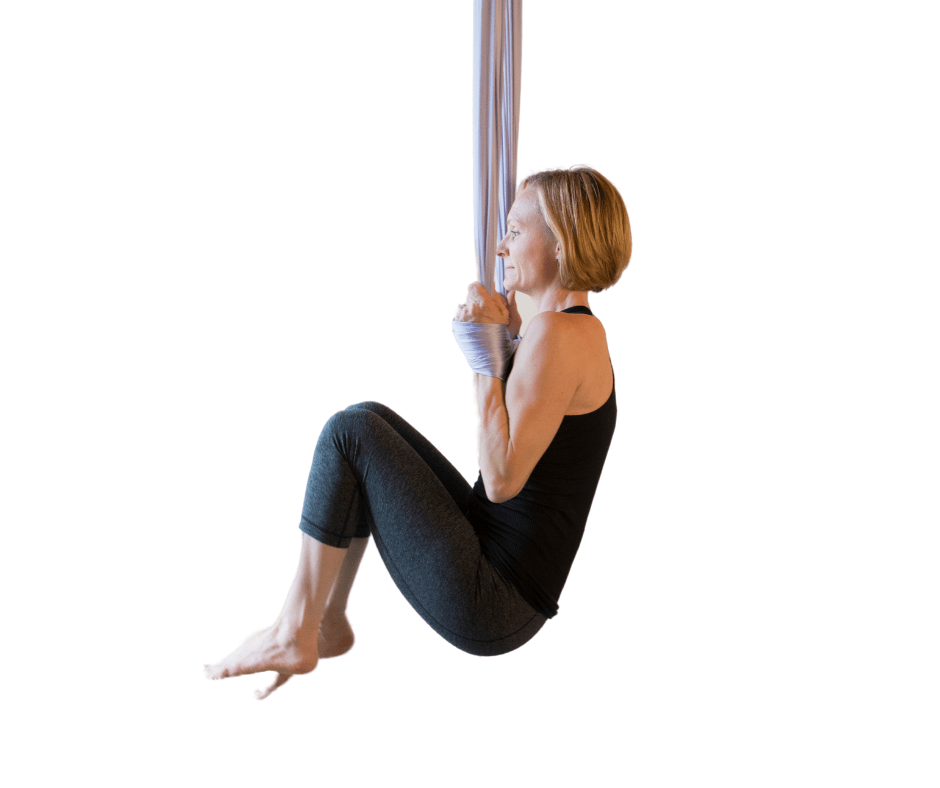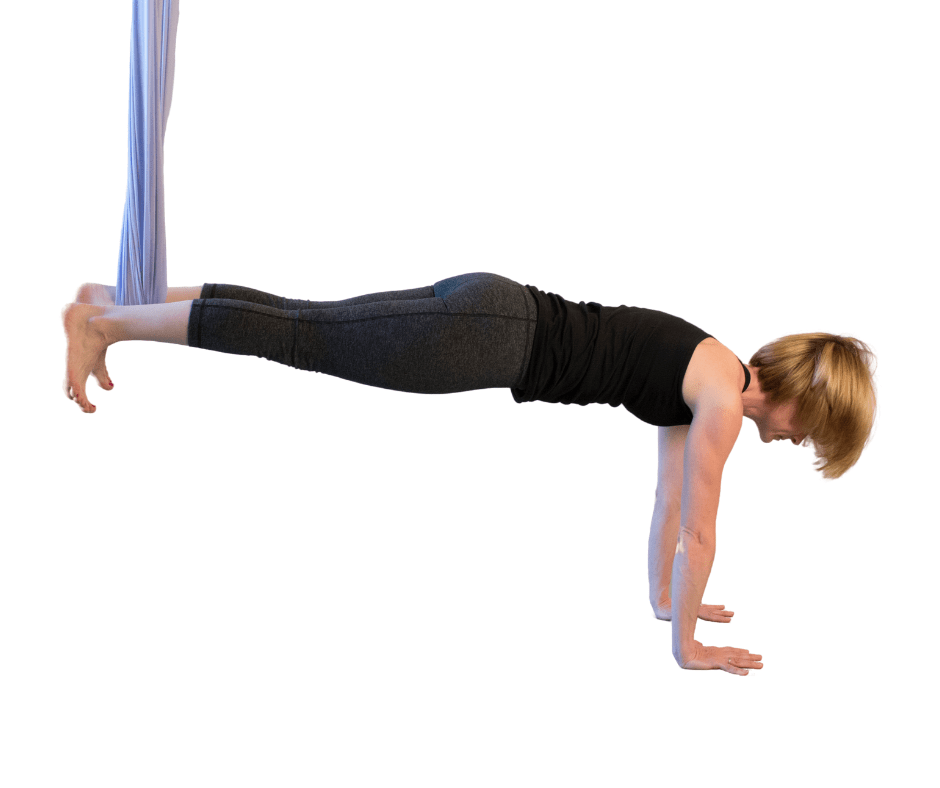One of the ways that aerial yoga is different from traditional yoga is that it requires a greater recruitment of upper body muscle groups, including hands, arms, shoulders and core. Aerial yoga incorporates a significant amount of pulling, something that is typically absent in traditional yoga, since there is rarely anything to pull, except for the occasional yoga strap. The act of pulling, however, is critical to practicing aerial yoga, and following these three tips will help prep your body to really rock your next aerial yoga class.
Grow your grip strength
Cultivating hand and grip strength is key to any aerial yoga pose that requires lifting yourself off the ground or the silk. Your entire body weight is practically in your hands! (Actually, it’s a bit more complicated than that, but we’ll discuss this in the next section.)
It usually takes aerial yoga students some time to develop grip strength, which is why many complain of hand cramps or pain after their first few classes. This often stems from two causes. One, they are using their hands in a new way and more frequently; and, two, they are gripping tighter than they need to in certain poses, which is an interesting parallel to real life. When we are uncertain or nervous, we tend to become more rigid in an effort to regain some control. Class cues like “relax your grip if you find you are holding on for dear life,” or “loosen the death grip” often elicit sheepish giggles from students, as they realize they are, in fact, squeezing the silk with all their strength, even when that’s not really necessary.
Working on your finger, hand and grip strength would not only help you feel stronger and more secure in an aerial yoga class, but it would also allow you to transition to doing many of the more intermediate and advanced aerial yoga poses, which require pulling up, while simultaneously winding up or inverting.
Stretch & strengthen your arms and shoulders
 The power to complete more complex aerial yoga movements doesn’t just reside in the hands. As you can imagine, arm and shoulder strength and flexibility plays a vital role in the pulling action that is predominant in aerial yoga. This includes a variety of movements, like spreading the silk horizontally, climbing up the silk, and pulling the static body up from the floor, all of which can be leveled up gradually as students get stronger.
The power to complete more complex aerial yoga movements doesn’t just reside in the hands. As you can imagine, arm and shoulder strength and flexibility plays a vital role in the pulling action that is predominant in aerial yoga. This includes a variety of movements, like spreading the silk horizontally, climbing up the silk, and pulling the static body up from the floor, all of which can be leveled up gradually as students get stronger.
Arm and shoulder strength is also critical to controlled reverse pull-up motions, like lowering yourself back to the floor from an elevated position or clearing the silk when flipping in or out of it. Sometimes students are so interested in getting upside down, they gloss over the upward movement required to get them back to standing.
Working on strengthening and stretching the muscles in and around your arms and shoulders, does wonders for your upper body and can help take your aerial yoga practice to the next level.
Check out the 21 Days of Aerial Yoga Conditioning mini tutorials on our Instagram profile for exercises that will help you strengthen and stretch your arms and shoulders.
Work That Core
 Aerial yoga can be an enlightening and humbling experience, as students who thought they had good core strength find the movements to be very challenging. Core muscle engagement is required for most movements, aerial yoga or not, to stabilize in order to mobilize your body.
Aerial yoga can be an enlightening and humbling experience, as students who thought they had good core strength find the movements to be very challenging. Core muscle engagement is required for most movements, aerial yoga or not, to stabilize in order to mobilize your body.
Many people think the term “core” refers to abdominal muscles only, but it actually encompasses all of the muscles that wrap around the lower torso, including the sides and back of your body. Depending on the type and complexity of movement, we can target the back, front, side, or a combination of the core muscles.
The extra challenge of balancing yourself in aerial yoga, with one, two or all limbs in the silk, creates a unique opportunity for cultivating powerful core strength. Think about the additional effort required to steady yourself on a Bosu ball or a trampoline. Aerial yoga creates a similar type of demand on proximal strength and stability. Imagine how much harder you would need to work to hold an aerial yoga plank steady with your ankles in the fabric, rather than both hands and feet firmly planted on the mat.
Once you have mastered a static plank hold, you can layer on additional movements to challenge yourself further, like squeezing one knee into the chest or shifting hips up and forward over hands. Many of the intermediate and advanced aerial yoga poses and transitions require substantial core strength, which is why we train these skills extensively in our intro and beginner classes.
About the author
Katharine Scalora is the co-owner of Earth & Aerial Yoga in Hudson, MA. She is an RYT-200 and a certified aerial yoga teacher and trainer. She loves teaching both mat and aerial yoga classes, and her passion about the benefits of both grows as her knowledge deepens. Her classes are playful and exploratory. She will encourage you to take risks and see your practice expand in ways you might not anticipate. Her teaching style has been influenced by studying yoga biomechanics with Jules Mitchell and apprenticing with Jacqui Bonwell.
